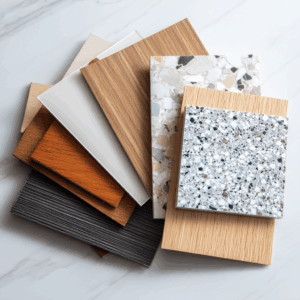Thicknesses & Cut Settings

When it comes to laser cutting, not all materials—and certainly not all thicknesses—are created equal. Even small differences in material thickness can dramatically impact how you set your laser’s power, speed, and number of passes.
Mastering this balance is key to clean, efficient cuts and preserving the life of your machine.
Understanding Material Thickness
Laser cutters handle a wide range of material thicknesses, typically measured in inches (imperial) or millimeters (metric). Some common examples:
Paper/Cardstock – ~0.2 mm
Basswood/Birch Plywood – 1/8″ (3 mm) or 1/4″ (6 mm)
Acrylic Sheets – 1.5 mm, 3 mm, 5 mm, 6 mm, 10 mm+
Leather – 2 oz to 8 oz weight (roughly 0.8–3.2 mm)
Generally:
Thinner materials = faster cuts, lower power needed
Thicker materials = slower cuts, higher power, sometimes multiple passes
Each material and thickness will behave differently based on the laser’s wattage and type (CO₂, diode, or fiber laser).
Basic Factors Affecting Cut Settings
Power
Higher power = Deeper and faster cutting. Needed for thicker or denser materials.
Speed
Slower speed = Allows more laser exposure per inch, helping cut thicker materials cleanly.
Frequency / Pulses per Inch (PPI)
Higher frequency = Smoother edges (important for acrylic and plastics).
Number of Passes
Multiple passes = Sometimes better for extremely thick materials rather than blasting full power in one go.
When in doubt, don’t cut it!
If you’re ever unsure whether a material is safe, research it thoroughly or ask in a trusted laser community before proceeding. Your health, your equipment, and your workspace depend on it.
Material
Thickness
Power
Speed
Passes
Birch Plywood
1/8″ (3 mm)
70%
20 mm/s
1 pass
Birch Plywood
1/4″ (6 mm)
85–100%
8–12 mm/s
2 passes
Cast Acrylic
3 mm
60–70%
15–20 mm/s
1 pass
Cast Acrylic
6 mm
80–90%
10–12 mm/s
1–2 passes
(Example settings based on a 60W CO₂ laser. Always test your own machine!)
The Importance of Test Cuts
No two materials—or even batches—are exactly alike. Always perform a small test cut to:
- Fine-tune your power and speed settings
- Check for burning, charring, or incomplete cuts
- Adjust focus height if needed (especially for thick materials)
Tip: Create a simple test grid file with varying speeds and power levels. One small piece of scrap can save you hours of frustration later.
Machine Wattage Matters
Lower-wattage lasers (like 40W–60W CO₂ or diode lasers) will naturally struggle more with thicker materials. You may need:
Multiple passes
Slower speeds
Higher power percentages
Excellent air assist to keep cuts clean
Higher-wattage lasers (like 90W–150W CO₂) can often cut thicker materials (up to 1/2″ wood or acrylic) in a single pass, but need careful calibration to avoid charring or excessive kerf (cut width).
Final Tips for Managing Thickness & Settings
Adjust Focus for Thick Cuts: Some users “refocus” between passes for better depth cuts.
Watch for Flame & Smoke: Too slow or too much power can ignite materials or cause dirty burns.
Use Air Assist: Blowing air while cutting keeps cuts cleaner and prevents flare-ups.
Keep Lenses and Mirrors Clean: Thick material cuts generate more smoke—dirty optics kill performance fast.
Mastering material thickness and cut settings is like learning the “language” of your laser. With practice and a few test runs, you’ll be able to dial in clean, beautiful cuts across a huge range of projects.




